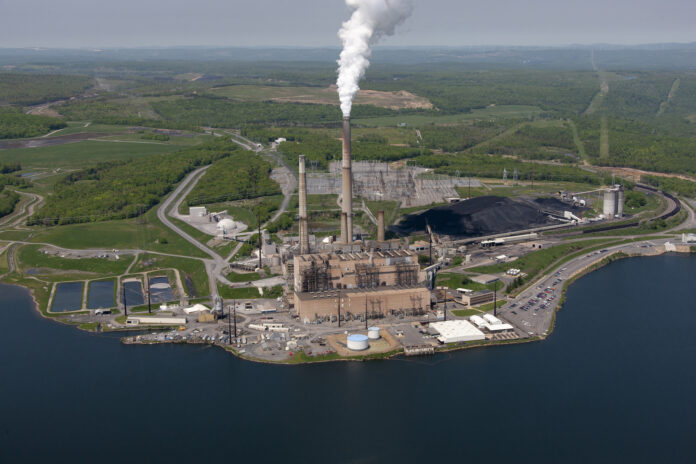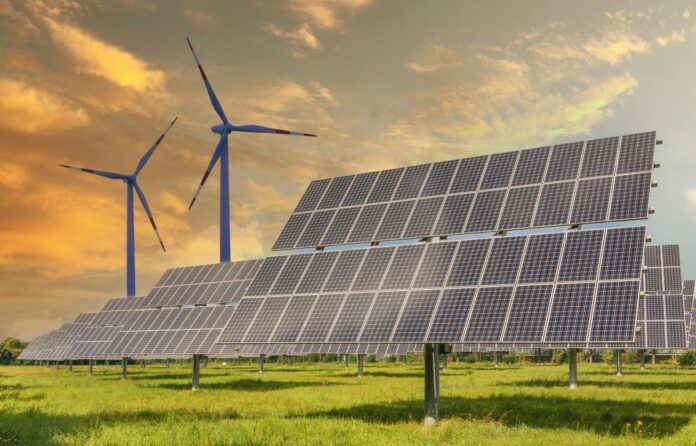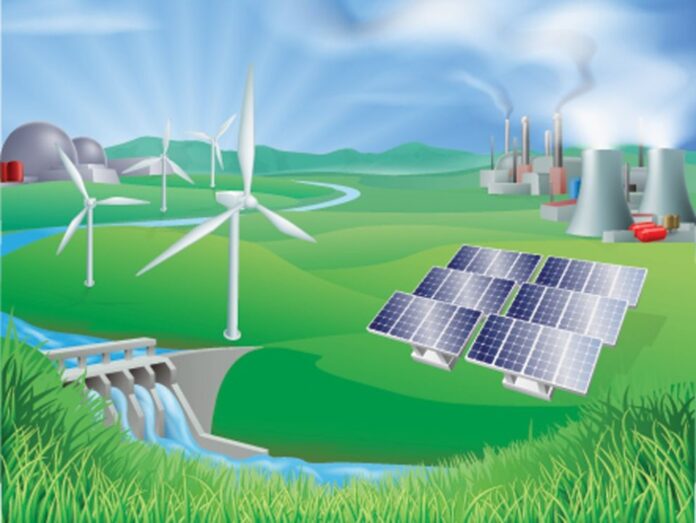The energy sector stands at a crossroads, defined by the critical choice between renewable and non-renewable sources. This choice not only dictates our approach to modern energy needs but also shapes our environmental and economic future. In this exploration, we will dissect the fundamental differences between these two paths, illuminating the impacts, challenges, and potential of each.
Essence of Renewable Energy

Renewable energy sources are characterized by their ability to replenish naturally and rapidly. Unlike their non-renewable counterparts, these sources are derived from ongoing natural processes. Solar radiation, wind, and water flow are quintessential examples, offering an endless supply of energy. The primary allure of renewable resources lies in their minimal environmental footprint and sustainable nature. These forms reduce our reliance on finite resources, paving the way for a more ecologically sound future.
Nature of Non-Renewable Energy

In contrast, non-renewable sources are those which do not replenish at a significant rate compared to their consumption. Fossil fuels like coal, natural gas, and oil are the primary examples. These resources, formed over millions of years from the remains of ancient organisms, offer high density but at a considerable environmental cost. The extraction and utilization of these resources have been linked to significant environmental degradation, including air pollution and climate change.
Environmental Impact
The environmental implications of the energy choices we make cannot be overstated. Renewable sources present a greener, cleaner alternative, significantly reducing greenhouse gas emissions and other pollutants. Their adoption is crucial in combating climate change and preserving biodiversity. On the other hand, non-renewable sources, while currently more prevalent in our mix, contribute extensively to environmental issues. The burning of fossil fuels is a major contributor to global warming, acid rain, and air pollution.
Economic Considerations

The economic landscape of energy is as varied as it is complex. Initially, renewable technologies required higher investments compared to traditional fossil fuel-based systems. However, with technological advancements and increased scale of production, the cost of renewable has been steadily decreasing, making it increasingly competitive. In contrast, non-renewable, despite its current dominance, faces challenges like fluctuating prices and the eventual depletion of resources. Moreover, the external costs associated with environmental damage and health impacts are significant but often not accounted for in the price of non-renewable.
Technological Advancements
Technological innovation plays a pivotal role in the energy sector. In the realm of renewables, advancements are continuously being made in efficiency and storage capabilities, addressing one of the primary challenges of intermittency. Innovations in wind and hydroelectric power, for example, have led to more efficient, cost-effective solutions. Conversely, while there have been improvements in the extraction and use of non-renewable resources, these advancements often come with increased environmental risks, such as in the case of hydraulic fracturing.
Global Energy Politics
The choice between renewable and non-renewable is deeply intertwined with global politics. Countries rich in fossil fuel reserves have historically held significant geopolitical power. However, the shift towards renewables is altering this dynamic, democratizing energy access and reducing dependency on a few resource-rich nations. This shift is not just environmental but also a strategic move for energy security and political autonomy.
Societal Implications

The societal impact of our energy choices is profound and far-reaching. Renewable sources, with their minimal environmental impact, offer a path towards healthier, more sustainable communities. They provide opportunities for local and decentralized energy generation, which can empower communities and reduce reliance on large-scale grid systems. In contrast, non-renewable sources, particularly fossil fuels, have been linked to health problems due to air and water pollution. Moreover, the extraction and transportation of these fuels often lead to ecological disruption and social unrest.
Integration Challenges
Integrating renewable sources into existing power grids poses its own set of challenges. The intermittent nature of sources like wind and solar requires a rethinking of grid management and storage solutions. Innovations in battery technology and smart grid systems are crucial in this regard. Non-renewable sources, on the other hand, have the advantage of consistency and predictability but come with their own integration issues, such as the environmental impact of infrastructure and the need for extensive transport and storage systems.
Policy and Regulation
The role of policy and regulation in shaping the energy landscape is undeniable. Government policies can either accelerate or hinder the transition to renewable energy. Subsidies, tax incentives, and research funding have a significant impact on the development and adoption of renewable energy technologies. Conversely, policies that favor non-renewable sources, often influenced by powerful industry interests, can impede this transition. Effective policy must balance environmental concerns, economic realities, and social impacts to facilitate a smooth transition to a more sustainable energy mix.
Education and Public Awareness
Educating the public about the importance of renewable and the challenges associated with non-renewable sources is crucial. Public awareness campaigns, educational programs, and community engagement initiatives play a significant role in shaping public opinion and driving consumer and policy decisions. Misconceptions and lack of knowledge can be significant barriers to the adoption of renewable. An informed public is more likely to support sustainable practices and policies, paving the way for a greener future.
Investment and Financing

The financial aspects of energy production cannot be overlooked. Investment in renewable requires upfront costs but offers long-term savings and environmental benefits. The financial sector’s growing interest in sustainable investments is a positive sign, reflecting a shift in understanding the long-term viability and necessity of renewable energy. In contrast, investments in non-renewable are increasingly viewed as riskier, given the volatile nature of resource availability and the growing regulatory pressures to reduce carbon emissions.
Summary
In sum, the choice between renewable and non-renewable energy is a complex one, involving environmental, economic, technological, political, social, and financial considerations. A balanced approach, acknowledging the strengths and addressing the limitations of both, is essential for a sustainable energy future. While the momentum towards renewable energy is encouraging, a pragmatic view that considers the current infrastructure and energy needs is necessary.









